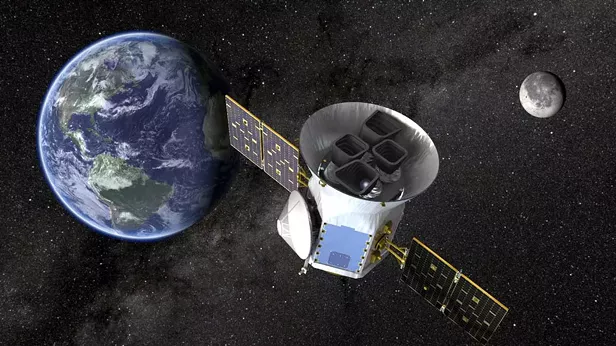
Sitting in the cavernous nose of a SpaceX Falcon 9 rocket, NASA's TESS was launched on April 18 from Cape Canaveral. By the time you read this, TESS —Transiting Exoplanet Survey Satellite — will be starting its initial two-year, all-sky survey. TESS's mission is to detect planets orbiting comparatively nearby stars in our Milky Way galaxy, out to about 100 light years. (The Milky Way is about 100,000 light years across.) Astronomers estimate that TESS will at least double the tally of confirmed exoplanets, or planets orbiting stars other than our sun, currently numbering about 4,000.
Why TESS?
TESS is a logical follow-up to NASA's dying Kepler Space Telescope (launched in 2009) and precursor to NASA's flagship $10 billion James Webb Space Telescope (JWST, scheduled for launch in 2020). Kepler was essentially a proof-of concept mission: Could a space telescope detect the presence of distant planets by measuring tiny dips in a star's brightness as the planets transits (passes in front of) the star? It sure could; Kepler detected thousands of exoplanets up to 3,000 light years away in a patch of sky just 1/400th the area of the entire cosmos. However, these planetary finds are mostly too distant for further investigation and too large to harbor life. TESS, on the other hand, is optimized to search for smaller, brighter and comparatively nearby planets.
The best way to think about TESS is as a finderscope (that's the "survey" in its name), identifying Earth-like planets for detailed examination by the JWST and others. TESS will survey almost the entire sky over the next two years, taking a month to image each of 26 Orion-constellation-size swaths. The 15 percent of sky not included in this primary mission will be covered later.
Elegant Orbit
Of all TESS' many remarkable features, I think the most interesting is its eccentric 13.7-day orbit (half a lunar month). TESS will fly out as far as the moon's orbit (apogee) and then back to swing around the Earth (perigee). This orbit is quite tricky to acquire, taking nearly two months, including a lunar gravity assist and burning up about 40 percent of the mission's scanty $200 million budget in the process. The genius of this previously untried orbit is that it's super-stable — no course corrections needed for decades! — due to the fact that when TESS is at apogee (at 59 Earth radii) it will be out of phase with the moon by 90 degrees. This means that the moon's gravity will be acting on TESS from one direction for about two weeks and from the other direction for the next two weeks, with the one effectively canceling out the other.
The advantages of this elegant orbit compared to, for example, the Hubble Space Telescope, which is in a low Earth orbit of 340 miles, include:
Most of the time, TESS will be sufficiently far from Earth to allow for 300-hour unbroken observations;
TESS will be far enough out to avoid any stray light from the Earth and moon, or radiation from Earth's Van Allen belts;
When it's closest to Earth at 17 Earth radii, TESS' speedy download rates of 100 megabits/second will allow for an efficient 4.5 hour, 200 gigabyte data-dump every two weeks.
Next time we'll look at how we detect exoplanets and, once found, how we can probe them for possible signs of life.
Barry Evans (barryevans9@yahoo.com) marvels that in 26 years, we've gone from zero to several thousand known exoplanets.
Read Again https://www.northcoastjournal.com/humboldt/tess-the-planet-hunter/Content?oid=9762892Bagikan Berita Ini















0 Response to "TESS the Planet Hunter"
Post a Comment